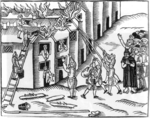Mid Devon
Mid Devon DistrictNon-metropolitan districts of DevonPages with non-numeric formatnum argumentsUse British English from June 2019

Mid Devon is a local government district in Devon, England. The council is based in the district's largest town of Tiverton. The district also contains the towns of Bampton, Bradninch, Crediton and Cullompton, along with numerous villages and surrounding rural areas. Part of the district lies within the Blackdown Hills, an Area of Outstanding Natural Beauty. The neighbouring districts are East Devon, Teignbridge, West Devon, Torridge, North Devon and Somerset.
Excerpt from the Wikipedia article Mid Devon (License: CC BY-SA 3.0, Authors, Images).Mid Devon
Great Western Way, Mid Devon
Geographical coordinates (GPS) Address Nearby Places Show on map
Geographical coordinates (GPS)
| Latitude | Longitude |
|---|---|
| N 50.9 ° | E -3.49 ° |
Address
Great Western Way
Great Western Way
EX16 5DT Mid Devon
England, United Kingdom
Open on Google Maps









